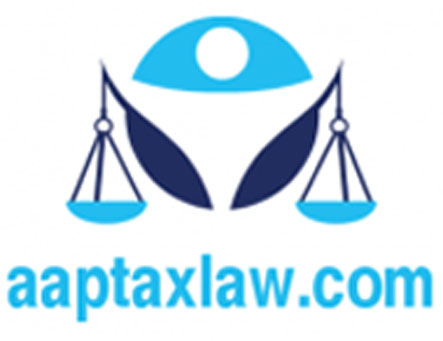

Return or
Withhold or
Assent
Passed again in Council of States and House of People -> Assent
Absolute Veto
Bill is gone
Qualified Veto
President send for reconsideration
-> Bill passed with Higher majority
-> Veto Cancelled
-> Ascent
Suppressive Veto
President sends for reconsideration
-> Passed again
-> Assent
Pocket Veto
Not Constitutional Amendment
Not signed
Not Rejected
Not Returned
Pending
1986 Giani Zail Singh aid for India Post office Bill
Accepted 3 years later by R Venkataramanan
Presidential Veto
Government reserves states bill for President's consideration
Article 200
President
- Return
- Withhold
- Assent
1. Pro-Term Speaker
- President appoints
- Generally Senior Member
- Oath by President
2. Summoning
- Calling
- At least 2 years
- 6 Month Maximum
Sessions
July to September - Monsoon
November to December - Winter
February to March - Budget
3. Adjourning
- Temporary suspension
- Specified time
4. Adjourning Sine Dine
- Adjourning for indefinite time
5. Prorogation
- When session ends
- Sine Dine
- Speaker gives prior order -> Final Decision of president
-> Release notification -> President signs
6. Dissolution
- Session ends
Loksabha
Automatic 5 Years
Random President
Bills
Committee, efforts to stay bill
Reconsidered
7. Quorum
1/10
No Quorum
- Adjourn or
- Suspend
8. languages used in Parliament
- Article 120
- Hindi, English
- Speaker / Chairman may allow mother tougue
9. Lame Duck Session
Last session of old Loksabha after a new Loksabha is elected
10. Bill
Public Bill
- by Government
- Presented by Minister
- Rejection 0%
Private Bill
- by Opposition
- Presented by Opposition
- Rejection 100%
- 30 day notice
1. Ordinary Bill
Bills not financial:
CAA, IPC amendment, IBC etc
Process
1. First reading
- Either house introduces
- No discussion
- Only reading
- Published in gazette for other members to read
2. Second Reading
Detailed reading, clause by clause
3. Third Reading
- Debate
- As a whole accept or not
- No talk about amendment
4. Transfer to other House
- Same procedures
Pass without objection
Give back with amendment i.e. rejected
Pending
5. Assent
2nd House
- Pass -> Assent
- or Pass with amendment -> to First House or Assent
- Reject or
- Pending
Reject
1st House and Rejects Amendments -> Pending -> Deadlock
President summons Joint session
51% present and voting
Imposition of Tax, Abolition of Ta, Revision, Alteration
- Council of Ministers
- Parliament
Borrowings, Consolidated Fund of India, Contingency fund, Public Account, Audit etc
Procedure
Loksabha + Prior recommendation of President -> Passed in Lok Sabha ->
Rajya Sabha Consideres
- Cannot Reject
- Return in 14 days
- Can give recommendations
Rajya Sabha
Accept
Reconsider
14 days Accept
Lok Sabha
Accept Recommendations -> President -> Assent
or Reject - Recommendations -> President -> Withhold
Consideration
Resend
Difference Between Ordinary Bill and Money Bill
| Ordinary Bill | Money Bill |
| Either House | Lok Sabha |
| Non-Financial | Financial |
| No Reconsideration and Pass | Reconsideration and Pass |
| Reject then Pass | Reject Cannot Pass |
| Joint Session | No Joint Session |
| No 14 days limit | 14 days limit |
| Minister + MP | Minister |
Different than money bills
Annual Financial Statement - Budget
Money Bill
Financial Bill Type 1
Not money bills. Much more
e.g. Borrowings, receipt etc
Introduction in Loksabha
Pass
Prior recommendation
Will not go to Rajya Sabha
Money Procedure
Article 117(1)
Financial Bill Type 2
e.g. Consolidated Fund of India
Article 117(3)
Prior Recommendation
Rajya Sabha
Ordinary Procedure
If bill is hanged and Lok Sabha dissolves, new Lok Sabha will decide.
Joint Session Presiding
1. Speaker
2. Deputy Speaker
3. Deputy Chairman
e.g. 104th Amendment
From South African Constitution
1. Simple Majority 50% + Members President and Vice President
2. Absolute Majority 50% + of total strength
3. Effective Majority 50% of effective majority
i.e. 50% of (total strength - vacancies)
4. Special Majority
(a) Rajya Sabha all India Services Committee. Rajya Sabha want to add to state list = 2/3 President and Vice President
(b) Fundamental Right
51% of total + 2/3 President & Vice President
(c) Impeachment
2/3 of Total
5. Special Majority of Parliament + consent of 1/2
Election of President, Judge provisions, Schedule 7, 2/3 (P&V) + Half States 50%+ States representing in Parliament
6. Constitutional Amendment
i. Introduction in either house
ii. 50% of total + 2/3 President & Vice President (LS+RS)
7. Federal Provisions Schedule 7
i. Introduced in either house
ii. 50% of total +2/3 President & Vice President (LS+RS) + 1/2 State Legislature President and Vice President
ii. Assent cannot be denied.
Note for LLB Entrance Examinations
Muslim Law
Nikah- Muslim Marriage Conditions
Hindu Law
Hindu Adoption and Maintenance Act 1956
Hindu Minority and Guardianship Act 1956
Hindu Succession Act 1956 Notes
Special Marriage Act 1954 Notes
Historic Development of Law in India
Constitution of India
Preamble of the Constitution of India
Fundamental Rights in Constitution of India
Article 32 Remedies for enforcement of rights
Directive Principles of State Policy
Executive, Judiciary, President, VP
Extent of Powers of Union, Supreme Court etc
State Judiciary, High Court, Lower Courts
Parliament, Council of states, house of people
Introduction and passing bills, budget etc
State Legislature, Composition, duration
Bills, Money Bill, Finance Bill, Proceedings
Emergency - National, State, Financial
EC, PSC, Finance, NCSC, NCST, NCBC
Non Constitutional Bodies, Niti ayog, NHRC etc
Panchayat, Municipality, Cooperative Societies
Important amendments to the Constitution
PIL - Public Interest Litigation, Judicial Review
Doctrine of Basic Structure in Constitution
Constitution of India Schedules and Provisions
Criminal Laws
Theft, Extortion, Robbery, Cheating etc
Tress Pass, Negligence, Nuisance, Defamation
Liability - Vicarious, Strict, Absolute Liability
Crime, Stages, Elements, General Exceptions
IPC Chapter, Provisions and Sections
Crime, origin, Elements, Stages Exceptions
Indian Penal Code Sections and Description
Other Laws, International bodies etc
Law of Torts - Civil Tort, Criminal Tort
Contract Essentials valid, void, voidable
United Nations, UNGA, UNSC, ICJ, UN ECOSOC